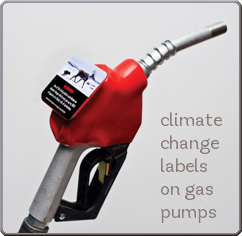Failure of imagination
Cars are incredibly inefficient.
The internal combustion engine typically converts only about 20% of the chemical energy stored in gasoline into mechanical energy to power the wheels forward; much of the rest is lost to heat and exhaust.[1] Also, if the vehicle weighs about 4,000 lbs and the person driving it weighs 160 lbs, the thing that we actually want to move represents only 4% of the total weight being moved.[2] Multiply these two percentages out and it means that less than 1% of the gas that goes into your car is actually used to move you from A to B!
For every $1.00 of gas we buy, $0.99 is wasted.
And every time we drive our cars, 99% of the pollution we emit is pointless! We are destroying our planet to move heaps of metal back and forth for our entire lives.
Mobility is about moving people and goods, not cars.
Cars have become synonymous with mobility. We suffer a failure of imagination. But this is changing.
“Car ownership rates are down among young people for the first time since the 1950’s.” – Toronto Star, 2012[3]
The auto sector needs to ask itself, “Are we in the business of slapping inefficient engines onto wheels and covering them with steel or are we in the business of providing mobility solutions?” Ultimately, the existing business model has no future. The choice this sector faces is between adaptation and irrelevance, between market leadership and lining up for another government handout.
And there are billions of dollars to be made in this shift. Our idea can be a catalyst behind a market transformation that paves the way for a prosperous domestic industry.
“Road transportation in Ontario was responsible for the greatest increase in emissions of all Ontario sectors between 1990 and 2008.”– Ministry of the Environment of Ontario[4]
NEXT: Cars: a century of stagnation…
- “Fuel Economy: Where the energy goes.” US Department of Energy’s Office of Efficiency and Renewable Energy/US Environmental Protection Agency.
- Danny Hakim. “Average U.S. Car Is Tipping Scales at 4,000 Pounds” The New York Times. 05 May 2004.
- Christopher Hume. “The sky’s the limit for Toronto Residential Growth” Toronto Star. 26 October 2012.
- Ministry of the Environment of Ontario. “Climate progress: Ontario’s Plan for a Cleaner, More Sustainable Future. Annual Report 2009-2010.” 2011.











